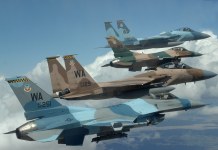The first time in 45 years, shots were fired at the Sino-Indian border during a face-off on September 7. While both sides blamed each other, analysts believe that besides the aim of capturing strategic heights, China also wanted to teach a lesson to the Indian Army’s Special Frontier Force (SFF) mainly consisting of Tibetans in exile.
Pakistan Could Acquire Semi-Stealth, 4.5 Gen Jets From China To Counter Indian Build-Up Of Rafales
A flare-up at the southern bank of Pangong Tso took place on the night of 29 August 2020. Several media reports revealed that a covert unit called the Special Frontier Force (SFF) was used to carry out the operation in eastern Ladakh. One member of the special force died during the clash.
According to Shishir Gupta of Hindustan Times, the latest PLA aggression is aimed at teaching the Indian Army a lesson for using the SFF, largely comprising Tibetans-in-exile, on the front line in the August clash.
“What has upset Beijing the most is that the sacrifice of a Tibetan SFF JCO Nyima Tenzin in the battle on August 29-30, something that has become a rallying point for Tibetans all over the world and sparked a new life to the resistance against the Chinese occupation of the region,” he wrote. “To make matters worse, the SFF proved its worth in high mountainous terrain.”
May soul of Brave Jawan rest in peace .
Deputy leader (rank of JCO) Nyima tenzin of 7th Vikas regiment, attained martyrdom in Ladakh, resident of Choglamsar(leh) tibetan refugee settlement.
Jai Hind and Jai tibet
source @Tenrik2 pic.twitter.com/ahuOZv6Hdu
— sorig ladakhspa (ソナム・リグゼン・ラダクパ) (@sorigzinam) September 1, 2020
Tibetans have been resisting the Chinese occupation for decades. The movement has now been rekindled after this bloody clash that killed one soldier. The Chinese consulate in Canada saw a protest by nearly 300 members of the Tibetan diaspora in Canada, supported by Hong Kongers and Uighurs in Toronto.
They also observed a minute’s silence in the memory of the Tibetan soldier. The protestors also extended their solidarity with the Indian soldiers martyred in the fighting in Galwan Valley.
SFF which is also known as the Vikas battalion is one of the most ‘mysterious’ armed units of India. It doesn’t fall under the purview of the Indian Army but is under the Cabinet Secretariat that reports to the prime minister.

The force isn’t usually involved in normal military operations, but covert action. Before the 1970s the US’ Central Intelligence Agency (CIA) was involved in covert operations to train Tibetan guerrillas to fight the occupation of Tibet by the Chinese government.
According to Air Vice Marshal, Suryakant Chafekar, AVSM, Shaurya Chakra, retired as SAASO maintenance command from the Indian Air Force, the Tibetan population’s support for India could be used to its advantage.
“If China has to fight India in eastern Ladakh, it has to be from Tibetan land. Can this be an opportunity to cultivate more of the local Tibetan population to fight for the Indian cause, which will in turn help their cause of achieving an independent Tibet?” he wrote.
He added that the action of the SFF in eastern Ladakh must have influenced quite a few youths from the Tibet region. He added that India needs to use this force in its fight against China.
“Committing the SFF for the mission in Ladakh and acknowledging their presence appears to be the first step towards challenging China’s grip by using the Tibetan population.”
Pakistan Could Acquire Semi-Stealth, 4.5 Gen Jets From China To Counter Indian Build-Up Of Rafales
Other experts in conversation with the EurAsian Times stated that an India, China conflict directly ignites the Tibetan fire who has been subjugated by Beijing with iron claws. This could see a global backlash against China with people of Tibet, Xinjiang, Hong Kong and Taiwan leading the way.
In terms of SFF, the analysts added that the battalion was raised to free Tibet from China, and its use by New Delhi against PLA soldiers that too in alleged Tibetan (Chinese) land would have really irritated Beijing. And PLA soldiers, who are known to crush aspirations of Tibetan people, were left helpless against the same Tibetans in the border clash.
Views of the Author. May not reflect the editorial policy of the EurAsian Times




